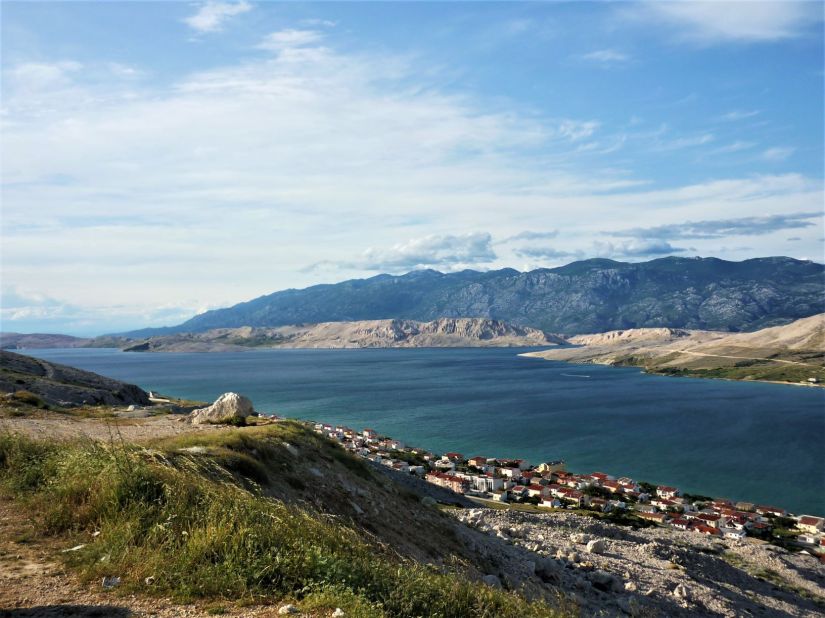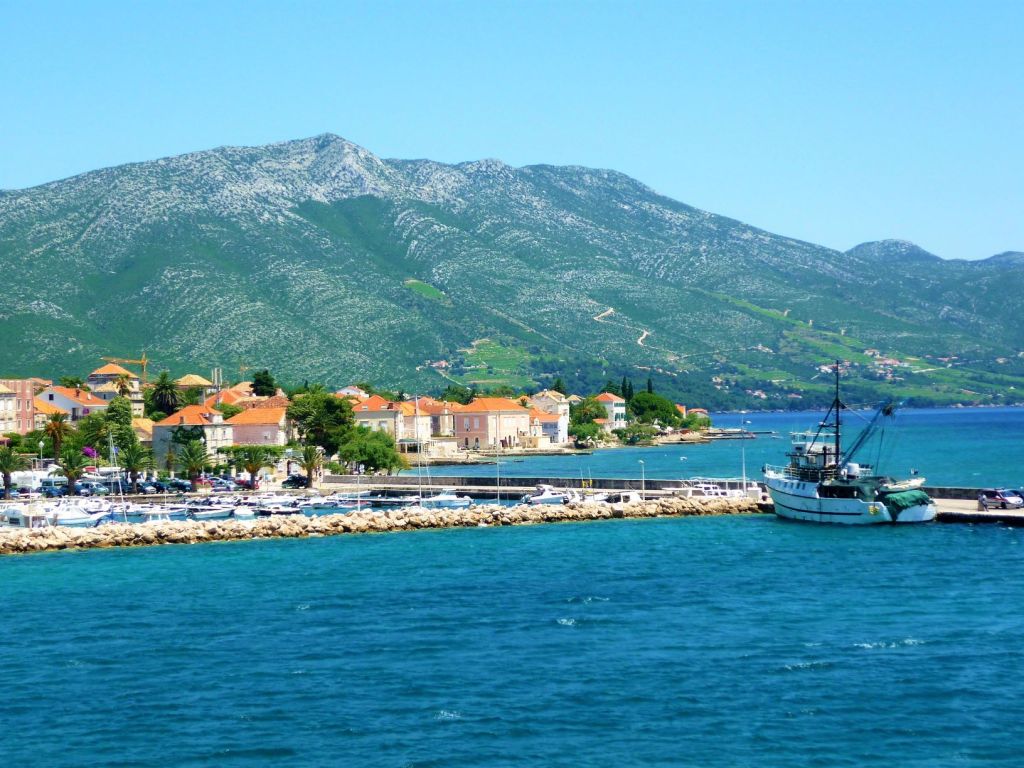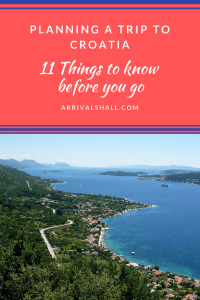This post contains affiliate links. Please see my disclosure about affiliate links here.
Croatia was my first introduction to the former Yugoslavia and it was love at first sight. To be honest, the love affair began at several thousand feet as Croatia’s exquisite coastline makes for one of the most scenic runway approaches I’ve seen. If you are planning a trip to Croatia here are some travel tips which will help you navigate this beautiful and underrated country.
TRAVEL ESSENTIALS
VISA:
Croatia is a member of the EU and the Schengen Area. EU/EEA citizens along with citizens of a number of countries including USA, Canada and Australia can visit Croatia for up to 90 days without a visa.
All visitors to Croatia must register with the police within 48 hours of arriving. Your accommodation provider will usually do this but may charge extra for the process.
ACCOMMODATION:
The Adriatic Coast is the most visited part of Croatia. Booking.com has a wide selection of hotels, apartments, houses, boats, campsites and other places to stay along the coast as well as inland options as well.
LANGUAGE:
Croatian, which bears a similarity to Serbian and Bosnian. Republika Hrvatska is what the Republic of Croatia is known as in its own language. Croatian website domains end with the letters hr.
Given the historical links, German seems to be the second language of older people. English is the second language of younger folk as it is now compulsory in schools. However, here’s a list of basic Croatian vocabulary:
CURRENCY:
The Euro since 1st January 2023.
GEOGRAPHY:
Croatia shares borders with the former Yugoslav countries of Slovenia, Serbia, Bosnia and Herzegovina, and Montenegro along with Hungary to the north. Croatia’s blessing is its extraordinarily long and beautiful coastline which contains over 1,000 islands in the Adriatic Sea. The southern part of Croatia’s coast is also known as the Dalmatian coast.
Mountains run the length of the country from the Slovenian border in the north to the Montenegro border in the south making the country ideal for trekking. Croatia has 8 National Parks.
BEST TIME TO VISIT CROATIA:
Like most of the southern European countries July and August can get very busy. June and September are ideal for beach holidays whilst April, May and October are good for city breaks.
Of all of the travel tips listed here the most important for beachgoers is to bear in mind that Croatia’s beaches are predominantly pebbled not sandy. So if you are planning a trip to Croatia, particularly its coastline, invest in a pair of water shoes although Croatia’s beach-side shops have them in stock. On the upside, no sand means crystal-clear waters.
FKK signs on beaches indicates a textile optional area. FKK stands for freikörperkultur, translated from German as Free Body Culture.
IS CROATIA SAFE TO VISIT:
Croatia is one of the safest places that I’ve visited and is in my top 10 solo female travel destinations list. Tourism is and always has been a large part of the Croatian economy, even during Yugoslav times, so locals are well prepared for all types of traveller. Locals are unobtrusive and let everyone get on with their own business.
Whilst not a safety hazard, be prepared for the scrum of sobe ladies at bus stations offering private rooms, especially in Dubrovnik.
ELECTRICAL PLUGS IN CROATIA:
The standard continental European type which is the two round pin plug/socket of 220V-240V.
FOOD IN CROATIA:
This was one of the nicest surprises. There is a distinct Italian feel about Croatian menus given the Venetian Republic’s role in the country. The obsession with making a pasta sauce from green herbs, lemon and olive oil was a tip I took note of. Bread, cheese and meat featured highly on menus.
Breakfast was coffee and a pastry. Family-run bakeries provided baguette-style sandwiches and servings of delicious burek, a filo pastry filled (usually) with meat. Pizza slices were ubiquitous and cheap. Seafood was expensive as apparently the Italians have over-fished the Adriatic!
Croatia produces its own wine and an amount of cherry liqueurs – Both come recommended.
PLANNING A TRIP TO CROATIA: TRANSPORT
GETTING AROUND CROATIA:
Bus transport is very popular for intercity travel as the rail network is limited, particularly on the coast. Buses are safe and inexpensive but charge extra to put luggage in the hold. The challenge with buses is finding the correct information in smaller towns and villages. In July and August book in advance if you can. Check out the GetbyBus website for more information.
Driving in Croatia is challenging. Terrain is mountainous and the friendly locals undergo a metamorphosis when they sit behind the wheel of a car. Over-taking on bends is commonplace and brake lights were not something I saw a lot of going downhill. On the other hand, a car is vital for accessing the small idyllic coves that dot the coastline. Check with your rental company if you can bring the hired car on to the islands by ferry.
Probably the best way of travelling the coast is by boat. Boat rental is available with and without a skipper. Scheduled ferries are efficient and reliable. Jadrolinija is the state-owned ferry company.
GETTING TO CROATIA:
I’ve tested a few ways. Croatia’s coast is connected by air to many European countries. Dubrovnik is both an air and bus transport hub, and is the gateway to Montenegro and Bosnia Herzegovina for many. I flew to Zadar with Ryanair and Dubrovnik with Aer Lingus, both from Dublin.
Entering Croatia by land from a non-EU country is arduous. I experienced a 1.5 hour delay when entering from Bosnia-Herzegovina and a 3 hour delay when entering from Montenegro. Both journeys were by bus. Bring a packed lunch and a good book!
Capital city Zagreb is well-connected to neighbouring countries by rail, bus and air. Pula, Porec, Rovinj, Zadar, Split and Dubrovnik are connected to Italy by ferry.
Dubrovnik is a stop on most Mediterranean/Adriatic cruise ship itineraries. As if Dubrovnik isn’t busy enough during the summer months, thousands of passengers alight from these large ships and head to the Old Town, making for a cramped experience.
DESTINATIONS
DUBROVNIK:
Croatia’s most southerly city is the country’s second most-visited city. It is a beautiful city, setting the standard for many towns dotted along Croatia’s coast. My Dubrovnik City Break guide outlines practical advice plus offers options on what to do during a visit.
ZADAR:
Ryanair may be a much-criticised airline but it was the curiosity which their route map instilled that brought Zadar city to my attention. Let my Things to Do in Zadar post be your perfect Zadar travel guide.
PAG ISLAND:
My first night’s sleep in Croatia was spent on Pag Island, a place with a lunar landscape. Less than one hour’s drive north of Zadar city, this island is the perfect introduction to Croatia.
PELJESAC PENINSULA:
Escaping the hustle and bustle of Dubrovnik, I discovered the gorgeous Peljesac Peninsula with its empty beaches and mountainous terrain. The perfect hideaway, the Peljesac Peninsula meets the mainland about an hour’s drive north of Dubrovnik.
OREBIC-KORCULA FERRY:
A practical guide to the Orebic-Korcula Ferry plus a quick guide to Korcula Old Town.
CROATIA HISTORY:
The Croats were a Slavic tribe who arrived from Eastern Europe after the fall of the Roman Empire. After that it gets complicated, with the country going from its own kingdom to being split between the neighbouring empires. The coastal area became part of the Venetian Republic with the Hapsburg/Austro-Hungarian Empire in charge further inland, all whilst battling incursions by the Ottoman Empire.
With the fall of the Venetian Republic Croatia became part of the Austro-Hungarian Empire until the end of World War I.
In 1918 Croatia became united with the other Slavic countries to form the Kingdom of Serbs, Croats and Slovenes and renamed the Kingdom of Yugoslavia in 1926 which was invaded by the Axis powers during World War II. The Resistance was led by Josep Broz Tito whilst the local fascist group, the Ustaše, colluded with the Nazis. The horrific actions of the Ustaše is a difficult subject in the Balkans even nowadays.
More name changes occurred: Federal People’s Republic of Yugoslavia in 1946 to the Socialist Federal Republic of Yugoslavia in 1963. Tito was leader of Yugoslavia up to his death in 1980 and his failure to put in place a successor led to a rise in nationalism and the disintegration of the federation.
Croatia declared independence on 25th June 1991 after a referendum a month earlier delivered a large consensus in favour of departing Yugoslavia. War followed until a UN ceasefire in 1992 brought most of the fighting under control. However, it took until 1998 for the entirety of Croatia to achieve peace. Croatia joined NATO in 2009 and the EU in 2013.







Great tips! I’ve seen Croatia becoming very popular this year with blogposts so maybe it’s about time I booked a trip there myself 😀
LikeLiked by 1 person
Great tips and good timing as we’re planning our first trip for the fall right now. I didn’t realize all visitors had to register within 48 of arriving. Lots of useful tips here, and lovely photos!
LikeLiked by 1 person
One of my colleagues is spending two weeks in Croatia next month and I am passing this to her as it has some great tips. Thanks for the useful information, especially the bit about registering with the police.
LikeLiked by 1 person
Thanks Razena. Accommodation providers will do this for you. I even stayed in Airbnbs in Croatia where the host registered me. August will be very hot in Croatia but thankfully it has a gorgeous coastline to cool down at.
LikeLike
I love that you gave some of the history and the basic info on Croatia. It’s definitely on my list as the coastline looks so gorgeous.
LikeLiked by 1 person